A History of the County of Buckingham: Volume 3. Originally published by Victoria County History, London, 1925.
This free content was digitised by double rekeying. All rights reserved.
'Parishes: Hedgerley', in A History of the County of Buckingham: Volume 3, ed. William Page( London, 1925), British History Online https://prod.british-history.ac.uk/vch/bucks/vol3/pp278-281 [accessed 15 January 2025].
'Parishes: Hedgerley', in A History of the County of Buckingham: Volume 3. Edited by William Page( London, 1925), British History Online, accessed January 15, 2025, https://prod.british-history.ac.uk/vch/bucks/vol3/pp278-281.
"Parishes: Hedgerley". A History of the County of Buckingham: Volume 3. Ed. William Page(London, 1925), , British History Online. Web. 15 January 2025. https://prod.british-history.ac.uk/vch/bucks/vol3/pp278-281.
In this section
HEDGERLEY
Huchelie, Huggele (xiii, xiv cent.); Hegeley, Hogeley (xv cent.); Hedgley (xvi cent.).
Hedgerley is a well-wooded, hilly parish covering some 1,097 acres, of which 260 are arable land, 460 permanent grass, 255 woods and plantations and 7 are covered with water. (fn. 1) The slope of the land varies from 167 ft. above the ordnance datum in the north-east of Hedgerley Park to 300 ft. in Bulstrode Park. The soil is rich loam and gravel, the subsoil chalk. The chief crops are oats, wheat and hay. In the south-east of the parish are Hedgerley Park, the property of Mrs. Hugh Norris and Colley Hill Farm. The small village of Hedgerley lies in a hollow west of the Park. With the exception of Shell House, a red brick building of late 17th-century date, containing many original features, including some doors and the upper part of the staircase, the houses and cottages are of no architectural interest. At the Court Farm an agricultural training is given to boys by the Church of England Society for Waifs and Strays. In the village are the rectory-house, a brick building erected in 1846, (fn. 2) and the school. The houses on the west side of the village street are in Hedgerley Dean, a hamlet of Farnham Royal. The church stands on the brow of a hill to the east of the village. Beyond it stretches Hedgerley Green, where is Leith Grove, a late 16th or early 17th-century timber-framed house, much restored. To the northeast of this is Bulstrode Park, the property of Sir John F. Ramsden, bart., covering 400 acres, part of which extend into Fulmer. It is well-wooded, containing some of the finest specimens of exotic trees in England, and the gardens, which are very beautiful, were originally laid out by Repton. (fn. 3) The house in Bulstrode Park was erected by the Duke of Somerset between 1855 and 1865 on the site of a house built by the notorious Judge Jeffreys in 1686 (fn. 4) and enlarged by William Bentinck, the first Earl of Portland. (fn. 5) On a hill to the south-east of the house are ancient earthworks. (fn. 6)
The following place-names occur in Hedgerley: la Rushette (fn. 7) (xiv cent.) and Hugeley Stapull (fn. 8) (xv cent.).
MANORS
There is no mention of Hedgerley in Domesday, but HEDGERLEY or HUGELY MANOR, which appears later, seems to have been included in the manor of Eton (q.v.), to which the overlordship was attached in 1254. (fn. 9) In the 14th century the Moleyns, to whom the overlordship had passed, (fn. 10) also owned Stoke Poges, and henceforth Hedgerley is described as held of that manor, (fn. 11) the last mention of the overlordship occurring in 1617. (fn. 12)
The earliest tenants of the manor appear to have taken their name from the place. In 1205 Vielus de Hugeley secured the right to land in Hedgerley. (fn. 13) Some years later John son of Richard (de Hugeley) held land there (fn. 14) and appears as plaintiff in a lawsuit in 1254 against Richard son of Gilbert de Hugeley. (fn. 15) This same Richard presented to Hedgerley Church in 1264. (fn. 16) In 1311 his son William held the advowson, (fn. 17) the descent of which runs with this property, and in 1325 conveyed the reversion of his lands in Hedgerley to Alexander de Saunderton, (fn. 18) to whom they had passed by 1348. (fn. 19) Alexander de Saunderton's widow married John Browne and was still alive in 1386. (fn. 20)
The next mention of this property is found in 1449, when, described for the first time as a manor, it was alienated by William Saunderton together with John and Alice Logge to Edmund Brudenell. (fn. 21) He died in 1469. (fn. 22) His son and heir Drew (fn. 23) was Sheriff of Bedfordshire and Buckinghamshire in 1474 (fn. 24) and died in 1490. (fn. 25) Edmund's son and successor of Drew Brudenell died in 1538, (fn. 26) and Hedgerley Manor then passed to his daughter and heir Elizabeth wife of Robert afterwards Sir Robert Drury. (fn. 27) Their son Robert succeeded his father in 1577. (fn. 28) In 1591 he sold Hedgerley to his son Henry, (fn. 29) who was knighted in 1603. (fn. 30) Sir Henry Drury died in 1617, when William his son and heir was aged twenty. (fn. 31) Ten years later he conveyed Hedgerley Manor to Christopher Stacy and John Blacknall. (fn. 32) In 1641 William Drury, blind, lame and destitute of estate, appealed to the House of Lords for the reversion of an award under a mortgage of this manor to Thomas Allanson. (fn. 33) It is next found in the possession of Marmaduke Darrell, who sold it in 1653 to William afterwards Sir William Bowyer, bart., of Denham Court. (fn. 34) He in his turn conveyed it in 1670 to Sir Roger Hill. (fn. 35) From this date the descent of Hedgerley Manor corresponds with that of Denham (q.v.) until 1832. (fn. 36) Thirty years later it belonged to Rice Richard Clayton, (fn. 37) who died in 1879, (fn. 38) His son and successor Richard Nugent Clayton (fn. 39) sold it in 1881 to Mrs. Stevenson, widow of Captain Henry Stevenson. (fn. 40) Their daughter Mrs. Hugh Norris is the present owner.
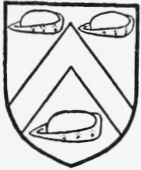
Brudenell. Argent a cheveron gules between three hats azure turned up with ermine.
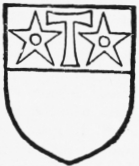
Drury. Argent a chief vert charged with a tau cross between two pierced molets or.
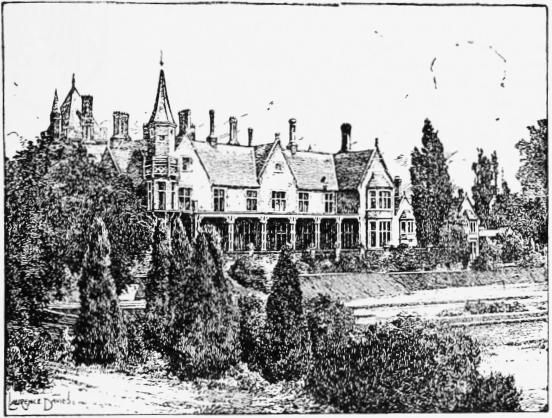
Bulstrode Park, Hedgerley
Another manor in Hedgerley was that of BULSTRODE, TEMPLE BULSTRODE or BULSTRODE PARK. (fn. 41) It is not included in the inventory of the Templars' estates in 1185, (fn. 42) and the earliest mention of their preceptory there occurs in 1276. (fn. 43) Eight years later their master claimed view of frankpledge and waif as of right immemorial. (fn. 44)
After the suppression of the Templars in 1308 (fn. 45) Bulstrode Manor was granted to the Knights Hospitallers, who transferred it to Hugh le Despencer in 1324. (fn. 46) It again came into the possession of the Crown on the forfeiture of his estates, (fn. 47) and in 1327 Walter Turk farmed the manor, (fn. 48) the rent being paid towards the maintenance of Eleanor, the widow of Hugh le Despencer. (fn. 49) Bulstrode was granted two years later to Burnham Abbey at a rent of £15. (fn. 50) In 1337 it was in arrears with the rent (fn. 51) and the same year was empowered to alienate the manor to William Montagu Earl of Salisbury, (fn. 52) who assigned it to Bisham Priory, Berkshire. (fn. 53) Bulstrode remained in the possession of this priory until its surrender in 1536. (fn. 54) Bisham was granted a new foundation charter as an abbey in the following year, and this manor formed part of the endowment. (fn. 55) In 1538 its possessions were again resigned, (fn. 56) and Temple Bulstrode was granted to Robert Drury, (fn. 57) and follows the same descent as Hedgerley Manor (q.v.) until 1617. On the death of Sir Henry Drury in that year it passed to his widow Susan Drury, in accordance with the terms of her marriage settlement. (fn. 58) She was still living in 1635, when the reversion was stated to pass after her death to Marmaduke son and heir of Sir Sampson Darrell, then fourteen years old. (fn. 59) In his petition to the House of Lords in 1641 William Drury (Hedgerley Manor, q.v.) complained that under a mortgage of Temple Bulstrode Manor to Sir Sampson Darrell it had been unjustly awarded to his heir Marmaduke. The latter alienated the manor in 1670 to the trustees for Sir William Bowyer, bart., (fn. 60) who later in the year sold it to Sir Roger Hill. (fn. 61) He conveyed Temple Bulstrode in 1686 to Judge Jeffreys, then Lord Jeffreys of Wern, (fn. 62) who died three years later, when his estates passed to his son John. (fn. 63) He died without male issue in 1702, (fn. 64) and Temple Bulstrode became the property of Charles Dive, (fn. 65) husband of Mary daughter of Judge Jeffreys. (fn. 66) Dive sold it in 1706 to William Bentinck, first Earl of Portland, (fn. 67) who lived at Bulstrode Park and was visited there by William III. (fn. 68) After William's death Bentinck retired into private life and spent his time in improving his Bulstrode estate, where he died in 1709. (fn. 69) Bulstrode Park remained the chief seat of the Portland family for over a century. (fn. 70) The third Duke of Portland, the Prime Minister, died in 1809, and in 1810 his son, the fourth duke, sold the Bulstrode estate to the Duke of Somerset, by whom the old house was pulled down. He was succeeded in 1855 by his eldest son, (fn. 71) on whose death in 1885 Bulstrode passed to his daughter, Lady Helen Guendolen, (fn. 72) mother of Sir John F. Ramsden, bart., of Bulstrode Park, the present owner.
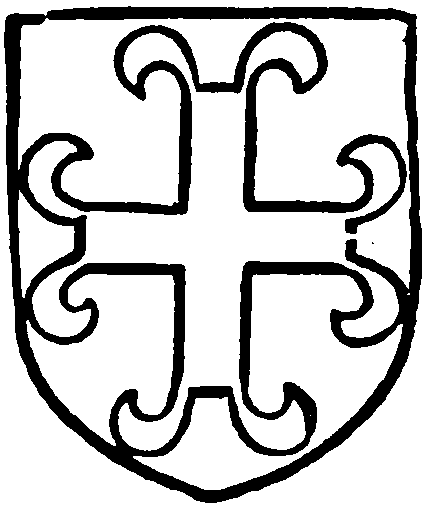
Bentinck, Duke of Portland. Azure a millrind cross argent.
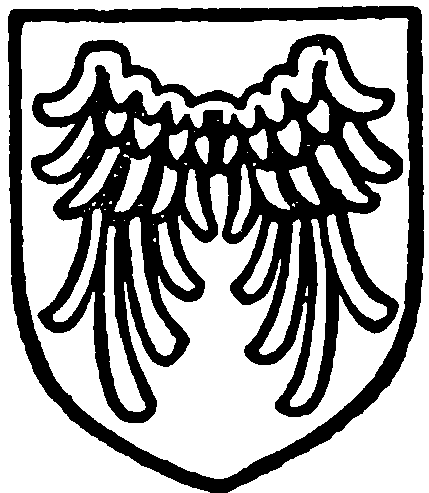
Seymour, Duke of Somerset. Gules a pair of wings or.
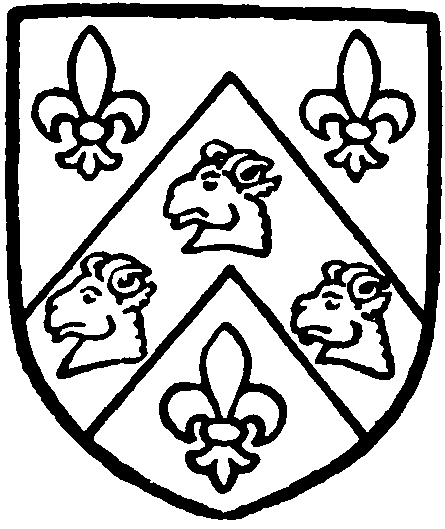
Ramsden, baronet. Argent a cheveron between three fleurs de lis sable with three rams' heads argent on the cheveron.
During the reign of Elizabeth a survey was taken of Hedgerley and Temple Bulstrode Manors. They included four farms, one called Pound Farm, covering among them two-thirds of the estate. The names of the tenants, the extent of their holdings, the rent paid and in some instances the date of the lease are specified in the survey. The yearly value of some 700 acres of land and 30 acres of wood was estimated at £385 16s. 2d. (fn. 73)
The priory of Little Marlow owned some land in Hedgerley at the Dissolution, (fn. 74) the reversion of a temporary lease of which was granted in 1537 to Bisham Abbey. (fn. 75) Three years later a fresh grant was made to John Titley and Elizabeth Restwold. (fn. 76) In 1573 it belonged to John Borlase. (fn. 77)
CHURCH
The church of ST. MARY consists of a chancel, nave, south porch, and western tower. It is built of rubble in the styles of the 13th and 14th centuries.
In 1767 the church was found to be in need of repair and a rate was levied for its restoration. (fn. 78) This church, however, was pulled down in 1852 and the present one built to the north of it on the east side of the village, some fittings from the former church being preserved. In the chancel, on the south side, is a brass with figures of Robert Fulmer, 1498, and Joan his wife, and of two sons and two daughters. The inscription, however, does not fit the indent and the woman's dress may be of a slightly earlier date. On the north side, there is a brass with figures of Margaret wife of Edward Bulstrode, 1540, and of her ten sons and three daughters; the inscription is a palimpsest and has on the reverse an inscription to Thomas Totyngton, Abbot of Bury St. Edmunds, 1312. Above the figures is the indent of a shield, two pieces of which, also palimpsest, are now in the rectory. The obverse shows a quartered shield of Bulstrode impaling a bend with three cinqfoils thereon; on the reverse is part of a representation of the Resurrection.
The font has a 12th-century circular bowl with a 15th-century stem and base. Upon the bowl have been carved, probably in the 15th century, eight small designs, including shields, heads (one of a bishop) and roses. There is a 17th-century cover of wood.
There is a 17th-century painting on canvas of the Ten Commandments, with illustrations and biblical explanations, in the vestry, given to the church at the end of the 18th century. In a frame on the south wall of the chancel there is a piece of red velvet, said to be part of a cloak given by Charles I for an altar frontal.
There is a ring of four bells: the treble and second dated 1908 by Mears & Stainbank; the third by T. Mears, 1808; the tenor recast in 1908 from a bell dated 1681. The old treble by Bryan Eldridge, 1640, inscribed 'Gloria Deo in Excelsis,' is still preserved.
The plate includes a small paten of 1634 and a cup of 1700.
The registers begin in 1539.
ADVOWSON
The descent of the advowson of Hedgerley Church (fn. 79) corresponds to that of the manor (fn. 80) (q.v.) until 1842, when it was purchased from Benjamin Way by Mr. Lewis, and sold in the following year to Edward Baylis. (fn. 81) He owned it until 1888, (fn. 82) when it passed into the possession of Miss A. Baylis. (fn. 83) It was purchased in 1900 by Mrs. Stevenson, (fn. 84) and is now held by Mrs. Hugh Norris, owner of Hedgerley Manor (q.v.).
At the dissolution of the chantries land and rent from Barden's Gyll in Hedgerley, valued at 3s. 4d., formed the endowment of an obit in the church. (fn. 85)
CHARITY
The Slade charity, founded by declaration of trust 24 March 1873, consists of £500 consols held by the official trustees, producing £12 10s. yearly, which is applied on St. Thomas's Day for the benefit of deserving and necessitous poor.
